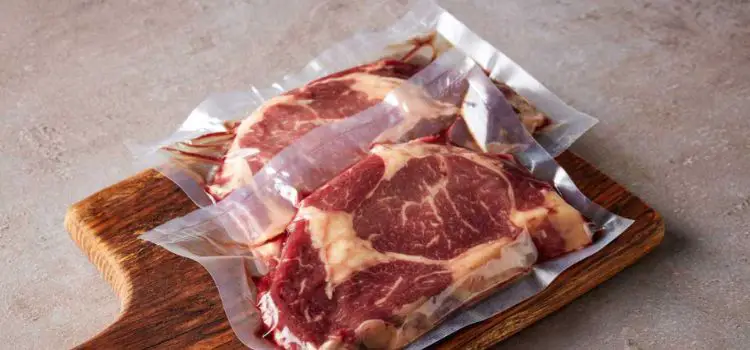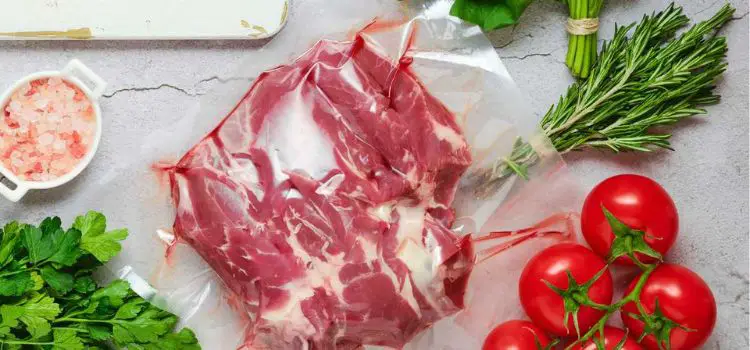As an Amazon Associate, I earn from qualifying purchases

Vacuum sealing is a modern marvel in food preservation, particularly for meat. This technique removes air from the packaging, significantly slowing the deterioration process by inhibiting the growth of bacteria and fungi. For those who love to savor high-quality meats, vacuum sealing is an essential practice that keeps flavors intact while extending shelf life.
Understanding the longevity of vacuum-sealed meats is not just about maintaining quality; it’s also about ensuring safety. Knowing how long various meats can last when vacuum-sealed and refrigerated is crucial for avoiding foodborne illnesses and maximizing the utility of your fridge.
Factors Affecting the Shelf Life of Vacuum-Sealed Meat
Several elements can influence how long vacuum-sealed meat can stay fresh in the fridge. Awareness of these factors can help you make informed decisions about meat storage.
- Quality and Freshness : The first step in extending the life of vacuum-sealed meat is to start with fresh, high-quality cuts. Meat that is close to its expiration date will not last as long as fresh meat, even when vacuum-sealed. Choose meats that are firm, moist, and of good color. If possible, purchase your meat from a trusted butcher who can verify its quality and freshness.
- Techniques and Equipment: The effectiveness of vacuum sealing largely depends on the equipment and techniques used. Invest in a reliable vacuum sealer and quality sealing bags that are suitable for meat storage. Ensure the seal is complete and airtight, as any air pockets can lead to spoilage. If you’re new to vacuum sealing, consider practicing with less expensive cuts or consulting tutorials to perfect the process.
- Temperature and Environmental Conditions: The temperature of your refrigerator is a critical factor in preserving vacuum-sealed meat. Keep your fridge consistently at or below 40°F (4°C) to prevent bacterial growth. Avoid frequently opening the fridge or storing meat near the door where temperature fluctuations are more common. Consistent temperature helps maintain the freshness of the meat over time.
Recommended Storage Times for Different Types of Meat
Different types of meat have varying storage durations, even when vacuum-sealed. Here’s a breakdown of recommended storage times to ensure your meat remains safe and delicious.
Storage Guidelines for Beef, Pork, and Lamb
When properly vacuum-sealed, beef, pork, and lamb can last approximately two to three weeks in the refrigerator. These meats are generally more robust in terms of their ability to withstand longer storage times due to their structure and fat content. However, for optimal taste and safety, it’s best to consume these meats within two weeks.
Storage Guidelines for Poultry
Poultry, including chicken and turkey, is more prone to bacterial growth and should be consumed sooner than red meats. Vacuum-sealed poultry should ideally be consumed within one to two weeks when stored in the fridge. Always check for any signs of spoilage, as poultry can harbor harmful bacteria if not stored properly.
Storage Guidelines for Fish and Seafood
Fish and seafood are particularly sensitive to spoilage and should be consumed within one week of vacuum sealing, even when refrigerated. Their delicate nature and high moisture content make them more susceptible to bacteria. Ensure fish and seafood are stored in the coldest part of the fridge and consume them promptly.
Tips for Ensuring Freshness

Maintaining the freshness of vacuum-sealed meats involves a few key practices that enhance the sealing and storage process.
- Best Practices for Vacuum Sealing Various Meats: Before sealing, pat meats dry to remove excess moisture, which can affect the seal. Seasoning meats before vacuum sealing can also improve flavor and reduce the need for additional spices when cooking. Make sure the edges of the sealing bags are clean and dry before sealing to ensure a complete and lasting seal.
- Optimal Fridge Conditions for Meat Storage: Store vacuum-sealed meats in the coldest part of the fridge, typically at the back or on the bottom shelf. Avoid overcrowding the fridge, as this can restrict airflow and lead to inconsistent temperatures. Regularly monitor your fridge’s temperature and adjust as needed to maintain optimal conditions.
- Importance of Labeling and Dating Packages: Always label and date your vacuum-sealed packages. This practice helps you keep track of how long each package has been stored and ensures you consume them within the safe timeframe. It also makes meal planning easier, allowing you to quickly identify and use meats that are nearing the end of their recommended storage period.
Signs of Spoilage
Despite best efforts, spoilage can occur. Being able to identify the signs of spoilage is crucial for ensuring meat safety.
Changes in Smell, Color, and Texture
Spoiled meat often emits an off, sour, or ammonia-like smell. Changes in color, such as browning or graying, or the development of a slimy texture, are also indicators of spoilage. If you notice any of these signs, it’s best to err on the side of caution and discard the meat.
How to Safely Assess if Vacuum-Sealed Meat Is Still Good
If you’re uncertain about the freshness of vacuum-sealed meat, conduct a thorough visual and smell test. If there’s any doubt, remember it’s better to be safe than sorry. Consuming spoiled meat can lead to severe foodborne illnesses, so when in doubt, throw it out.
Conclusion
Vacuum sealing is an effective method for extending the shelf life of meat while maintaining quality. By understanding the factors that influence longevity, following proper sealing techniques, and storing meats under optimal conditions, you can enjoy flavorful, safe-to-eat meat for weeks.
These practices not only enhance your culinary experiences but also ensure you make the most out of your food investments. Embrace these guidelines to keep your meats fresh and delicious, and always prioritize safety in your food storage practices.
FAQ
How long does vacuum-sealed raw meat last in the fridge?
Vacuum-sealed raw meat typically lasts up to two weeks in the fridge, depending on the type. Beef, pork, and lamb can last longer, while poultry should be consumed within one week. Vacuum sealing slows bacterial growth, but always check for spoilage before use.
How can you tell if vacuum-sealed meat is still good?
To assess vacuum-sealed meat, check for changes in smell, color, and texture. Spoiled meat may emit a sour or ammonia-like odor, appear discolored or slimy. If any doubtful signs are present, it’s safer to discard the meat to avoid foodborne illness.
What is the shelf life of vacuum-sealed cured meat?
Vacuum-sealed cured meat can last up to two to three weeks in the fridge. The curing process helps further extend its shelf life by reducing moisture and inhibiting bacterial growth. However, monitor for any signs of spoilage, and consume within recommended timeframes for safety.
As an Amazon Associate, I earn from qualifying purchases